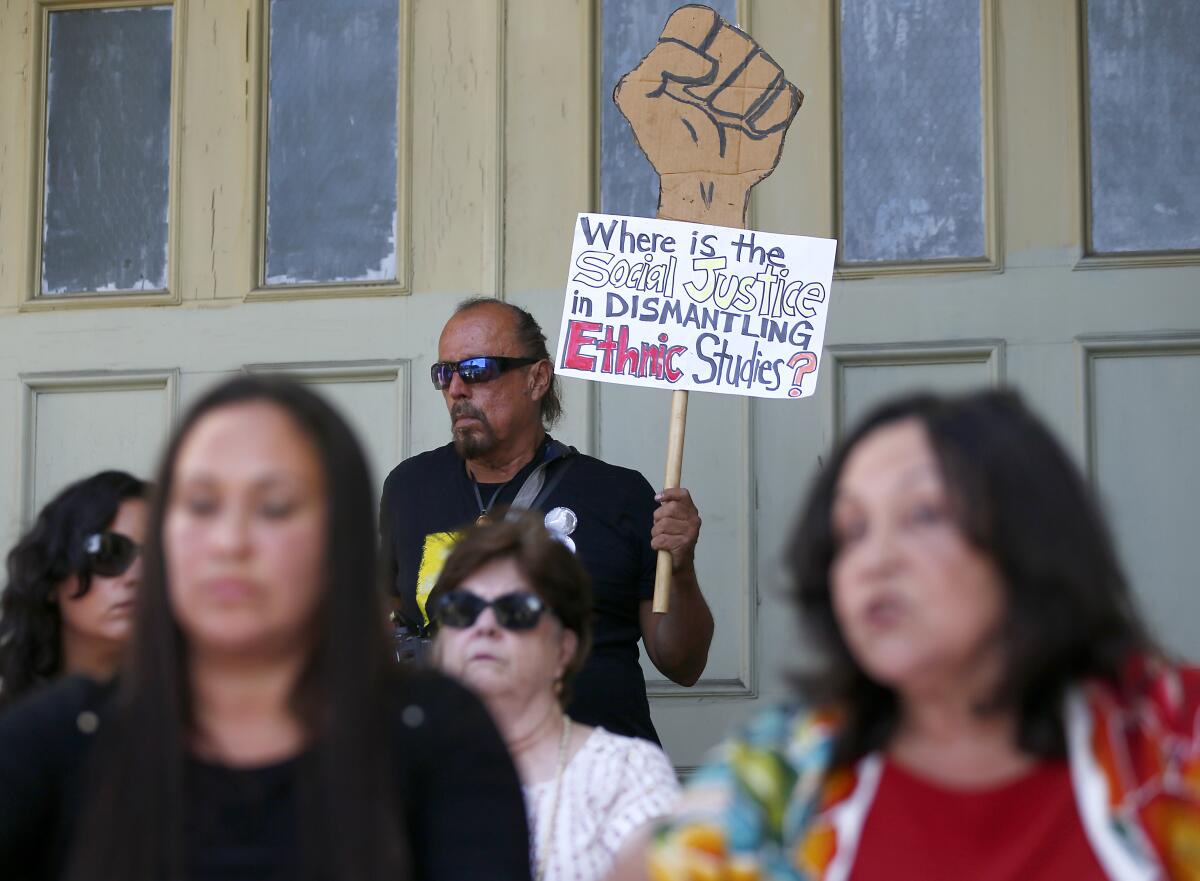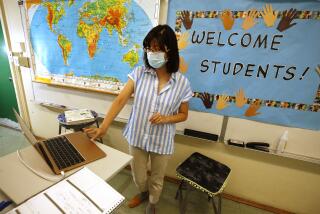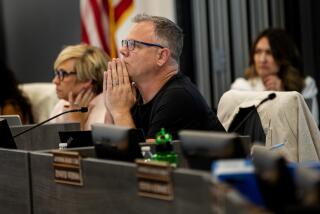Editorial: What critical race theory is — and isn’t — and why it belongs in schools

Race is a touchy subject in this country at the most easygoing of times, and these are not the most easygoing of times. The issue is especially fraught as the nation struggles to come to some kind of racial reckoning after the murder of George Floyd, who died under the knee of a white police officer.
It’s not surprising, then, that a renewed call for ethnic studies in public schools has caused a nationwide wave of contentious school board meetings, with opponents of such courses hurling accusations of indoctrination and in some cases attempting to recall the education leaders they had elected.
The verbal cudgel that opponents wield most often against ethnic studies is that it’s a version of “critical race theory,” an area of academic study that emerged during the 1970s that has lately become the bête noire of the right. More than 10 Republican-controlled states have moved to ban teaching anything about critical race theory in schools, even though many people have very little idea what this complex vein of scholarship is.
What many of its detractors do realize — and what they can’t stand — is that critical race theory challenges the notion that this is a land of equal opportunity for all, regardless of race, ethnicity or background. As it should. This is a land of equal opportunity — but only for some people. In those groups, opportunity has been passed on from one generation to the next, while other groups are perpetually left out. One of the main tenets of critical race theory is to point out this reality and make students of all backgrounds aware of the impact it has on their lives almost every day.
It’s disturbing enough when parents rise up against their children learning uncomfortable realities. It’s deeply problematic for legislators to turn this into a political opportunity by putting a chokehold on the truth. But it’s particularly troubling when a board of education assembles a panel to educate itself and the public about ethnic studies and stacks it with people who detest critical race theory. That’s what happened in July at a forum hosted by the Orange County Board of Education, where panelists at times misrepresented critical race theory and made statements about the current state of racism in America that were out of touch and sometimes downright false.
The panelists repeatedly talked about the dangers of teaching children that systemic and institutional racism exists. Overall, their presentations went something like this: Once the Jim Crow days were over and the Civil Rights Act of 1964 was passed, racism in the country was pretty much relegated to isolated acts of hatred. We’re all one and we need to unify; besides, they said, look at Black students’ dismal scores on standardized math tests. Clearly what’s needed to help them is more math instruction, not ethnic studies.
They conceded that low-income children might have been stuck in underfunded schools before, but now that federal aid has raised per-pupil funding for them, there’s little reason to worry about inequality in education. And one panelist brought up the tired and largely discredited old saw of “mismatch theory,” the idea that if Black students are given a boost to get into selective colleges, the classwork will be too hard for them.
One other concern voiced by some attendees at the forum was that critical race theory teaches white children that they are oppressors and Black and Latino kids that they are perpetual victims. They have a point. Some badly fashioned curricula based on critical race theory separate and isolate groups, and imply that white students should feel guilty. But that’s neither inherent to the theory nor its aim, said Theresa Montaño, professor of Chicana and Chicano Studies at Cal State Northridge.
A proponent of critical race theory, Montaño was originally scheduled to be on the panel but withdrew, saying she’d been told this would be a conversation by ethnic studies experts, but that instead it was a stacked panel of people who were uninterested in discussing ideas. Montaño was pretty much correct, but her presence was missed. She could have informed some very uninformed people about what critical race theory is and what they were getting wrong about racism in modern America.
The one frequently repeated statement that made sense during the forum is that students need to learn facts rather than be indoctrinated into taking one side or another. True as that is in principle, the discussion showed that what is considered a “fact” really is a matter of individual or group viewpoint.
At the heart of critical race theory is the concept of systemic and institutional racism — the notion that racism isn’t an occasional aberration of individuals acting in biased or hateful ways, but entire systems that have built up over this nation’s history that put people of color at a perpetual disadvantage and that will take purposeful action to remedy.
Just look at the situation in our schools. Research shows that Black male students incur harsher discipline at school than white ones, for the same infractions. Low-income children live with daunting obstacles to academic achievement, including daily food insecurity for 1 in 6 children, according to the Children’s Defense Fund — have you tried feeding a family on the amount that food assistance programs provide? — and historically underfunded schools staffed by teachers who assume their students will not succeed.
It’s an attitude that rubs off, and it doesn’t magically get waved away by correcting funding formulas now — in other words, there’s a lot more to it than spending more money on math instruction. Those schools helped perpetuate systems that held some students back while launching others to success. Just “working harder” isn’t going to cut it.
The very fact that the panelists — as well as politicians, journalists and education experts — reflexively use the phrase “low-income Black and Latino students” is telling. The terms almost always go together in metropolitan areas because of a long history of frameworks that put those groups at a disadvantage. White people get professional jobs that lift their incomes, then help their friends get hired at the same places — friends who are usually white. That’s not intentional, hateful racism, but it is a system that acts in a racist way, day after day, across the country.
Yet it is important to acknowledge that critical race theory confuses parents and the public — and many educators — because its adherents take different views about how it should be interpreted and used. Those who rail against it point with some justification to the first draft of California’s model ethnic studies curriculum, which Montaño played a role in creating. It attempted to inculcate in students the idea that capitalism is, like racism, a form of oppression and power. The curriculum left no room for the idea that there might be another side and that students could research and debate this in meaningful ways. The same was true of its one-sided and loaded take on the Israeli-Palestinian conflicts, its list of social justice groups worth studying and various other topics.
It might not matter what’s in the model curriculum, which has been overhauled in response to several volleys of critiques. School districts don’t have to use it, even if the state mandates an ethnic studies course as a high school graduation requirement. And that might be the biggest problem of all. In very progressive areas of the state, something akin to the original and troublesome model curriculum is being adopted; in conservative areas, ethnic studies will likely be watered down to a modern version of last century’s National Brotherhood Week.
Public education has gotten better at bringing the history, literature and art of marginalized groups into the classroom. But it has not gone nearly far enough, generally making the nation’s past sound much brighter and shinier than the full story suggests. Ethnic studies is one place where the intention is for students to see topics through the history and eyes of Black, Latino, Asian and Native Americans, the nation’s four most marginalized groups. Students spend most of their schooling seeing these issues through the eyes of white people who had the power to create the institutions and tell most of the stories.
It is true that students should not be proselytized and told what to believe. But they need to be taught the truth. The nation’s treatment of its most marginalized groups must not be glossed over. Students should be researching the very rich though disturbing topic of this nation’s racial history and current realities, learning both sides of controversial topics and debating those with others as they learn to reach informed and independent opinions.
The Orange County forum missed the chance to demonstrate that very thing. If the adults can’t be bothered to do open-minded research and deliver balanced reports based on the full facts, how can we expect students to carry it off? If nothing else, the bias shown by panelists, the board and most of the audience illustrated why an ethnic studies course is needed in our high schools, and why the study of systemic and institutional racism needs to be part of it.
More to Read
A cure for the common opinion
Get thought-provoking perspectives with our weekly newsletter.
You may occasionally receive promotional content from the Los Angeles Times.










